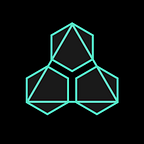Moback is Building the Next-Gen Robotics Research Platform with Google
Introduction
Teaching robots how to do tasks is hard if the task cannot be codified within simple logical rules. Often, there are tasks which might be easy for a human to perform with the robot, but will be nigh impossible to codify for a robot. That’s where algorithms like Machine Learning come in. However, those algorithms usually require extremely large datasets to be robust, and collecting datasets for every unique problem is tedious, and not economically feasible. One way to work around this problem is to involve humans to perform the task given and generate a data set. This is often called “human-in-the-loop”. Humans often need to be present with the robot to perform the task, and this leads to further constraints in solving the task at hand.
This problem is often tackled using simulators, which emulate the problem space and the environment around the robot. This is not a perfect solution either though, since training on a simulator and replicating the same performance in real life is a major issue. Real life presents complex, nuanced problems at every step of the adaptation process from the simulator.
Challenge
To tackle this problem, the approach taken has been to build simulators with physics fidelity which can provide an environment for the operators to solve the task presented to them. Even with the simulators though, the problem of adapting the solution to real life still exists, which can be tackled by using a representation of the actual space where the robot is performing its task. This can be accomplished by various sensors which recreate the robot space, and allow the humans to solve the task through this representation, thus collecting real life data which can be used to train a model which will eventually allow the robot to perform the task on its own. Since we are recreating the space where the robot exists, the best way to get the human to be able to solve the task is Virtual Reality: an experience of “being with the robot”, even though they might not be physically seeing the robot.
Moback’s Solution
- Build state-of-the-art simulators of robot environments which can provide an analogy to the problem being tackled and can support data collection through human intervention.
- Build a 3D interface which can recreate the real-life representation of the robot space where it is trying to solve the problem, thus letting humans perform the task through the “eyes” of the robot.
- Extend this highly technical interface for VR, allowing the human to perform the task with high accuracy and with the feeling of “being with the robot”.
- Build novel ways to represent robotic motion and control where the human might not be physically present with the robotic system.
To learn more about Google’s Robotic Research Platform visit:
